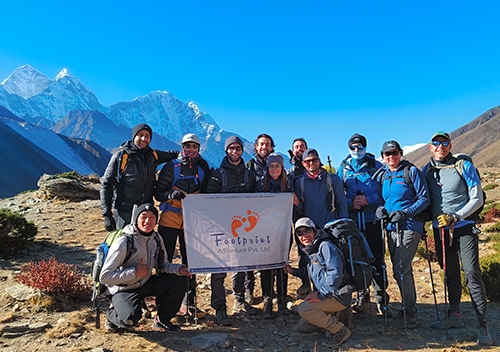Tengboche or Tyangboche village (3860m) is one of the renowned and most spiritual Sherpa village in the Everest region. It is a prominent resting stop for trekkers heading to Everest Base Camp. Located just 20-30 minutes downhill from Deboche Village, Tengboche Village is surrounded by stunning mountains like Taboche, Everest, Nuptse, Lhotse, Ama Dablam, Thamserku, and many more.This village is particularly known for housing one of the oldest monasteries in Khumbu region , the Tengboche Monastery, from which the village got its name . Lama Sangwa Dorje is said to have founded the Tengboche Monastery about 350 years ago, making Tengboche a prominent spiritual hub in the Everest region.With around two days of walking from Lukla Village, Tengboche offers basic facilities. Visitors can also find a bakery, a cafe, stupas, the monastery, and a trekking gear shop. Most trekkers heading to Debuche Village spend some time in Tengboche before continuing their ascent, as Debuche is considered less windy compared to Tengboche.
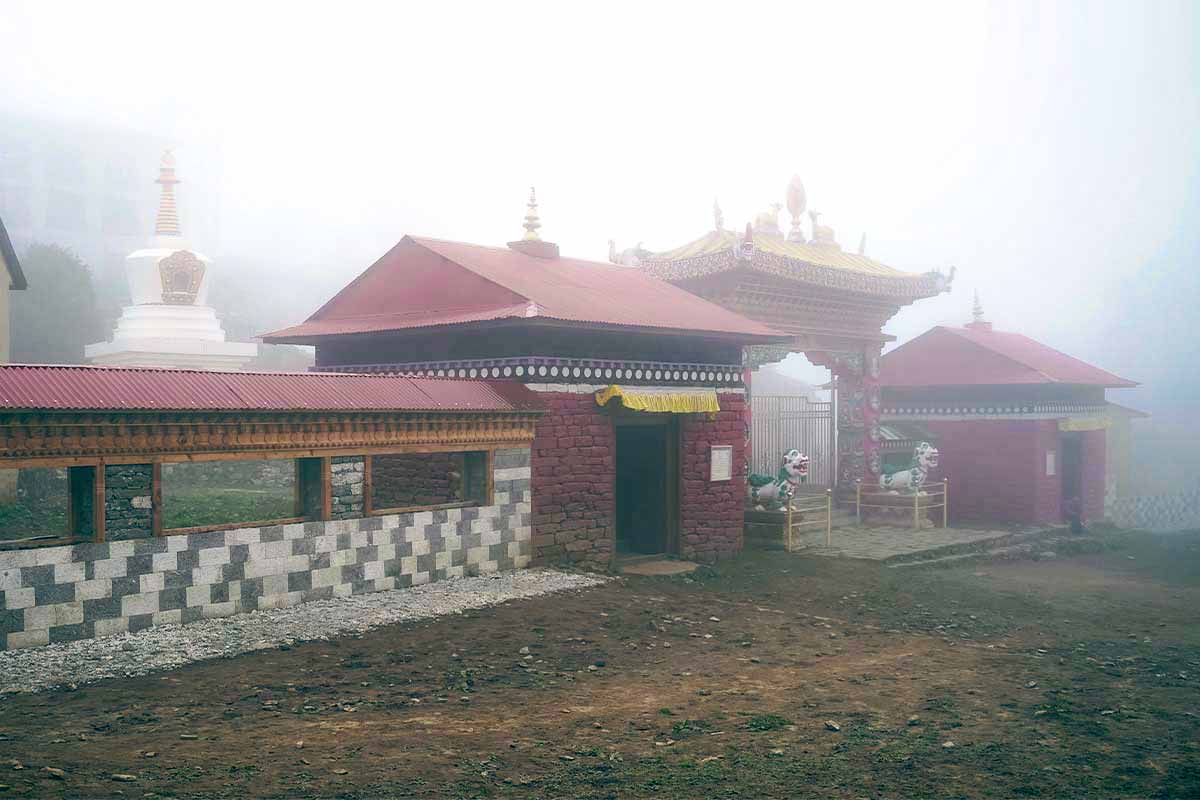
Widely known for its Buddhist monastery, Tengboche village is a prominent spiritual center for the Sherpa community. Most trekkers heading to Everest Base Camp or other peaks visit the monastery to light candles and seek blessings for a successful summit. In addition to this, the village hosts the cultural Mani Rimdu Festival once each autumn, where a large crowd of Lamas and Sherpa’s gathers at Tengboche Monastery to celebrate with masked dances, prayers, and feasts. The autumn season, from September to November, and the spring season, from March to May, is generally considered the best times to visit Tengboche Monastery. During the fall, visitors can enjoy the village's cultural festivals, and the weather is ideal for hiking to Everest Base Camp. In these seasons, the weather is generally clear, with heavy monsoons and occasional rainfall at a minimum.
Where is Tengboche Village?
Tengboche elevation of 3,860m is located in the Khumbu region of Nepal. Situated inside the Sagarmatha National Park, a UNESCO World Heritage site, it lies approximately 143 kilometers northeast of the Kathmandu Valley. The village is home to the Sherpas, who migrated from Tibet around 600 years ago. Reaching Tengboche requires a hike of about 4 days from Lukla, which includes two essential acclimatization days to adjust to the high altitude. Due to its elevation, altitude sickness is a possible concern in Tengboche. To minimize the risk of altitude sickness, trekkers are advised to spend acclimatization days in Namche Bazaar and Dingboche.
How to reach Tengboche Village?
- By Foot :To reach Tengboche Nepal first you need to fly to the Lukla Airport. From Lukla, you can trek to Namche Bazaar, then Khumjung, and finally to Tengboche village. The distance from Lukla to Tengboche is approximately 17 kilometers, and the trek typically takes 3-4 days, including an acclimatization day in Namche Bazaar to adjust to the altitude.Another option is to drive to Jiri and then hike for several days to reach Namche Bazaar, following the same route from there to Tengboche village. This route is longer and provides a gradual ascent, which can be beneficial for acclimatization.
- By Helicopter: Alternatively, you can take a helicopter to Tengboche village. There is a helipad near Tengboche Monastery. If you fly from Kathmandu, it takes around 45 minutes to reach Lukla, and from Lukla, it’s an additional 20-minute flight to Tengboche. However, direct flights from Kathmandu to Tengboche are uncommon due to the risk of altitude sickness from the sudden gain in elevation.
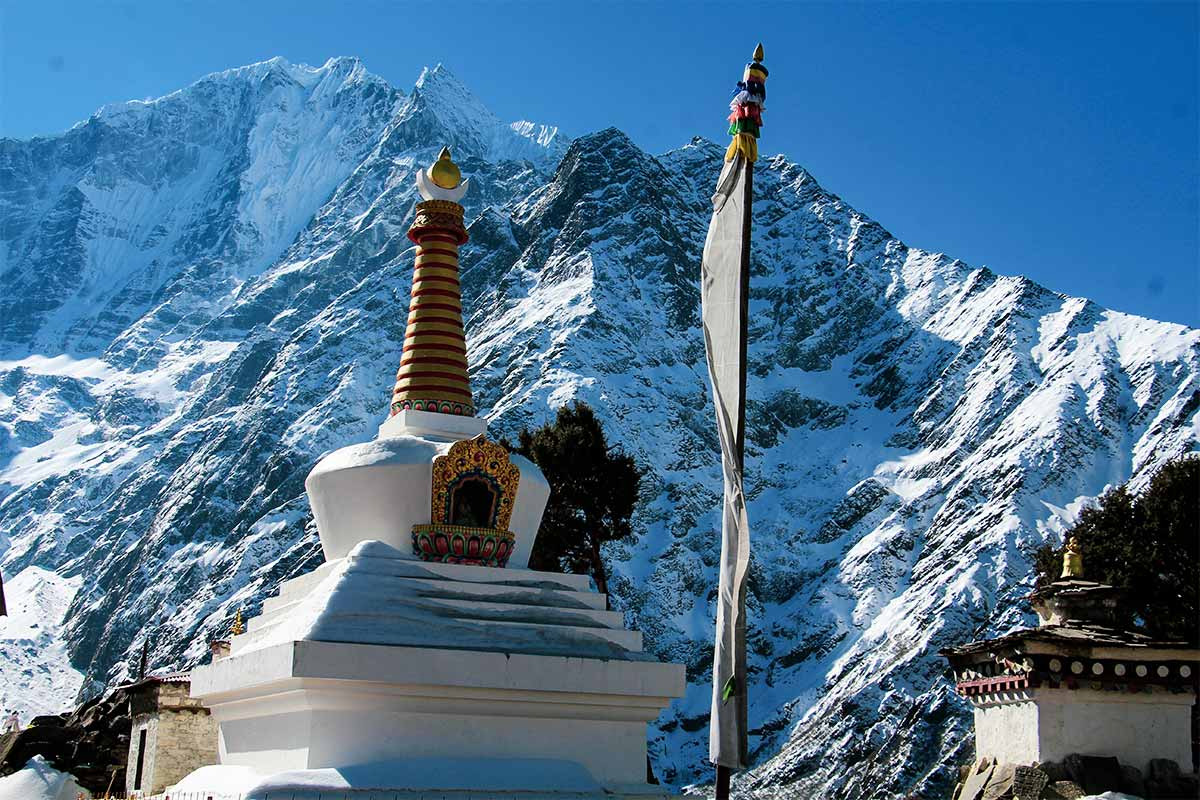
Accommodation and Facilities in Tengboche village
Accommodation in Tengboche village are basically simple guesthouses and lodges made of stone with wooden interiors. The rooms are very basic, with twin beds, thick blankets, and mostly shared bathrooms, though some lodges may have attached ones. Facilities in the village are limited, with a few teahouses serving local and basic western meals such as dal bhat and noodle soup and several more in the options. Common rooms with wood-burning stoves provide warmth and a place to socialize. Teahouses offer snacks and supplies for the hike, and hot water and Wi-Fi are available, although limited, at an extra charge. Electricity is solar-powered, and charging of electronic devices isn't always possible. For medical needs, there are centers in Kunde and Namche Bazaar.
Tengboche Village to Everest Base Camp Distance
The distance from Tengboche village to Everest Base Camp is about 16 kilometers (10 miles) when following the the main trekking trail. The path gradually ascends from Tengboche's elevation of 3,867 meters (12,687 ft) to Everest Base Camp at 5,364 meters (17,598 ft). This significant increase in altitude means trekkers need to ascend very slowly and get proper acclimatization to avoid altitude sickness.
Things to explore in Tengboche Village
Visit Tengboche Monastery
The Tengboche Monastery is one of the oldest monastery in Khumbu and most important religious centers in the Everest region. Constructed in 1916, this beautiful Buddhist monastery was built at an altitude of 3,867 meters (12,687 feet). Colorful paintings called thangkas, intricate wood carvings, and large statues of Buddhist figures can be seen inside the monastery. It is very famous for its views of Mt. Everest and other peaks around, including Ama Dablam. Visitors are also allowed to attend morning and evening prayer ceremonies, which involve monks chanting along with traditional instrumental playing. It's a must-stop for climbers heading to Everest, generally seeking blessings for a safe journey.
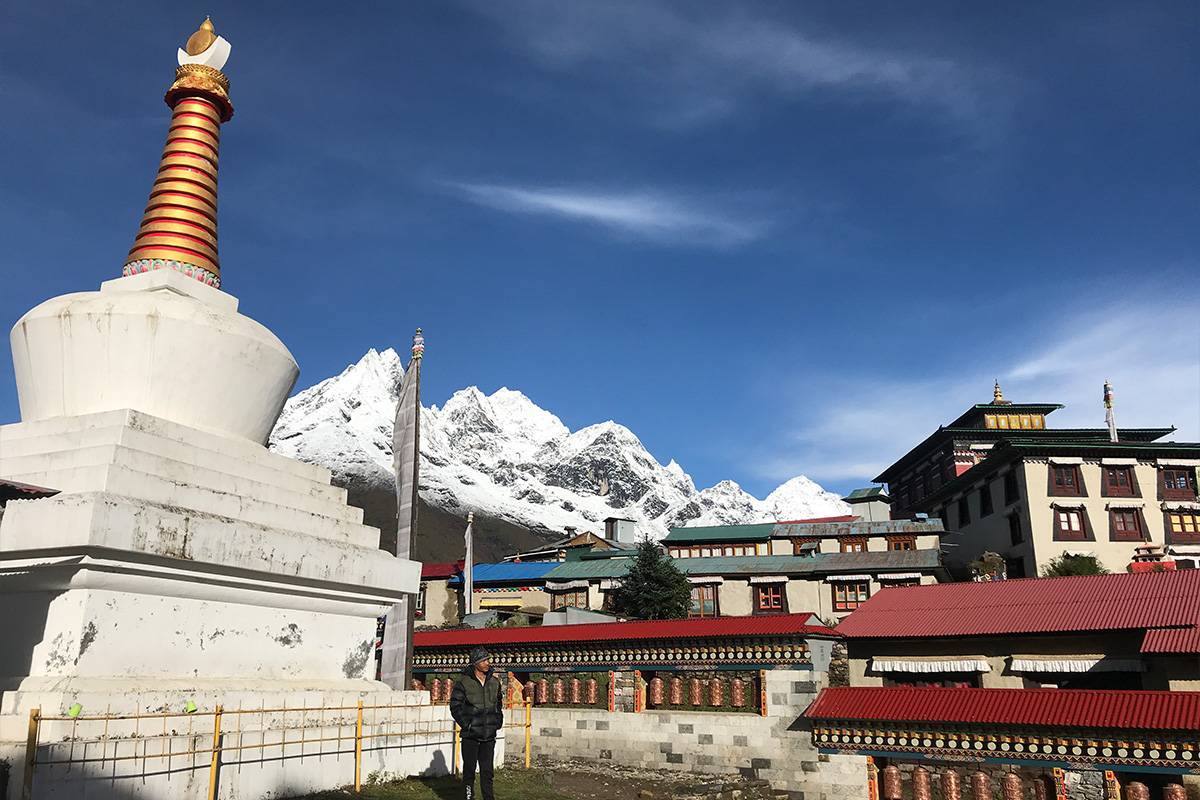
Sherpa Culture
Tengboche has Sherpa culture deeply integrated into daily life. These Sherpa people are well-known for their strength, their climbing skills, and their warm hospitality. You get to experience this unique way of life firsthand from the village itself. The traditional Sherpa houses in the village are of stone, and many families keep yaks for use as transport animals and for milk products. Besides this, they usually take tsampa- roasted barley flour, butter tea, and vegetables as their routine diet. There are also a variety of interesting Sherpa customs and beliefs linked with the mountains-which they regard as sacred. The visitors can learn about their traditional dress, food, music, and Buddhist religious practices.
Mani Rimdu Festival
The Mani Rimdu Festival is a three-day celebration held in autumn, usually in October or November. This colorful festival brings together locals and tourists to witness masked dances performed by monks, traditional music, and religious ceremonies. The dances tell stories from Buddhist teachings and local folklore. Monks wear elaborate costumes and masks to represent different deities and characters. The festival also includes the creation and destruction of a sand mandala, symbolizing the temporary nature of life. This celebration gives visitors a rare chance to see ancient Buddhist traditions come alive and join in the festive atmosphere with local people.
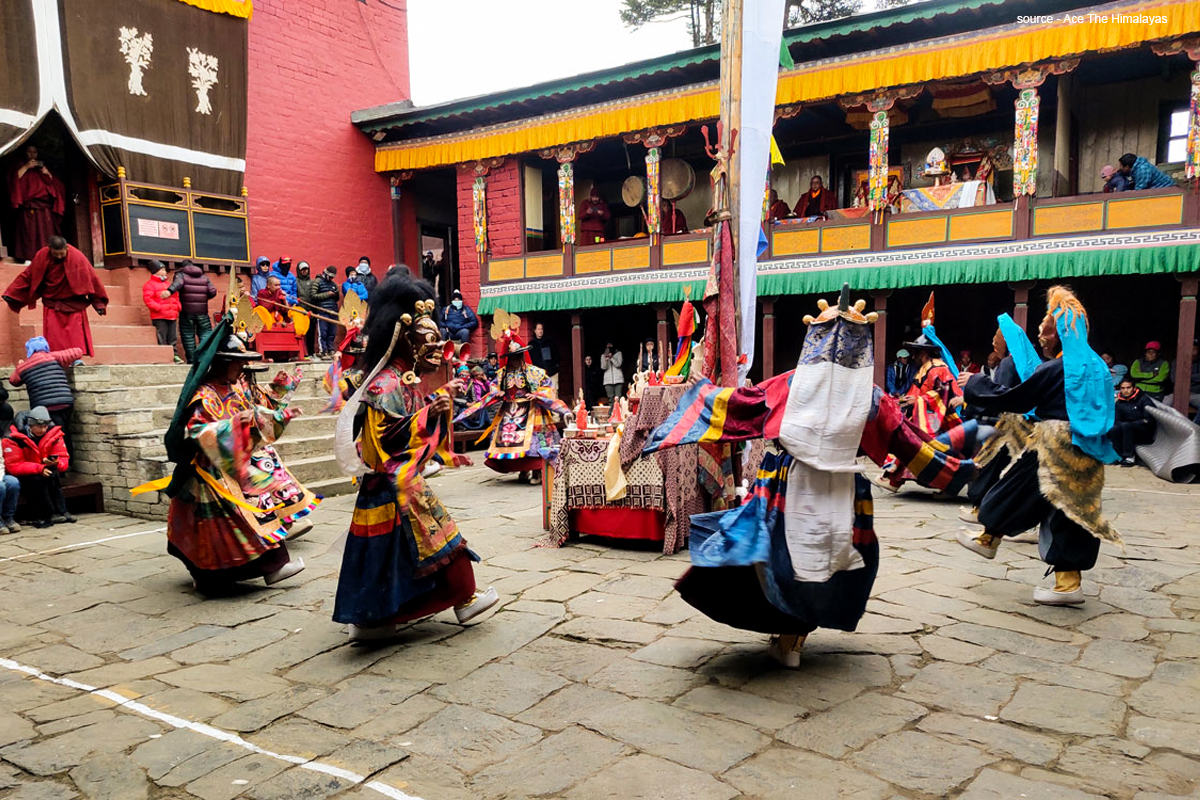
FAQs
What is the best time to visit Tengboche Village?
The best time to visit Tengboche Village is during spring from March to May and autumn from September to November. During these months, the weather is clear and pleasant for trekking and beautiful views.
Are photography and videos allowed inside the Tengboche Monastery?
Generally, photography and videos are not allowed inside the Tengboche Monastery to maintain the sanctity of the place. It's best to check with the local authorities before taking any photos.
What is the climate in Tengboche Village?
Tengboche is cold, especially during winter. Summer is cool and pleasant; the temperature during the day varies from 10°C to 20°C. Winter is very cold, and temperatures fall below freezing, especially at night.







